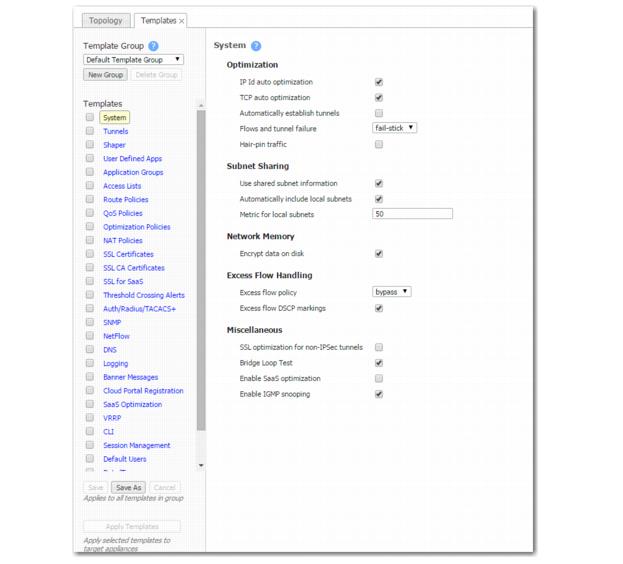|
n
|
Optimize traffic is a global setting for turning optimization on or off. Useful for comparing statistics before and after.
|
|
n
|
IP Id auto optimization enables any IP flow to automatically identify the outbound tunnel and gain optimization benefits. Enabling this option reduces the number of required static routing rules (route map policies).
|
|
n
|
TCP auto optimization enables any TCP flow to automatically identify the outbound tunnel and gain optimization benefits. Enabling this option reduces the number of required static routing rules (route map policies).
|
|
n
|
Automatically establish tunnels reduces configuration overhead by removing the need to manually create tunnels.
|
|
n
|
Flows and tunnel failure. If there are parallel tunnels and one fails, then Dynamic Path Control determines where to send the flows.There are three options:
|
|
•
|
fail-stick. When the failed tunnel comes back up, the flows don’t return to the original tunnel. They stay where they are.
|
|
•
|
fail-back. When the failed tunnel comes back up, the flows return to the original tunnel.
|
|
•
|
disable. When the original tunnel fails, the flows aren’t routed to another tunnel.
|
|
n
|
Use shared subnet information enables Silver Peak appliances to use the shared subnet information to route traffic to the appropriate tunnel. Subnet sharing eliminates the need to set up route maps in order to optimize traffic.
|
|
n
|
Automatically include local subnets adds the local subnet(s) to the appliance subnet information.
|
|
n
|
Metric for local subnets is a weight that is used for subnets of local interfaces. When a peer has more than one tunnel with a matching subnet, it chooses the tunnel with the greater numerical value.
|
|
n
|
Encrypt data on disk enables encryption of all the cached data on the disks. Disabling this option is not recommended.
|
|
n
|
Excess flow policy specifies what happens to flows when the appliance reaches its maximum capacity for optimizing flows. The default is to bypass flows. Or, you can choose to drop the packets.
|
|
n
|
Excess flow DSCP markings specifies whether the appliance should continue to set DSCP markings for flows that are beyond appliance's capacity to optimize.
|
|
n
|
SSL optimization for non-IPSec tunnels specifies if the appliance should perform SSL optimization when the outbound tunnel for SSL packets is not encrypted (for example, a GRE or UDP tunnel). To enable Network Memory for encrypted SSL-based applications, you must provision server certificates via the Unity Orchestrator. This activity can apply to the entire distributed network of Silver Peak appliances, or just to a specified group of appliances.
|
|
n
|
Bridge Loop Test is only valid for virtual appliances. When enabled, the appliance can detect bridge loops. If it does detect a loop, the appliance stops forwarding traffic and raises an alarm. Appliance alarms include recommended actions.
|
|
n
|
Enable SaaS optimization enables the appliance to determine what SaaS applications/services it can optimize. It does this by contacting Silver Peak's portal and downloading SaaS IP address and subnet information.
|
|
n
|
Enable IGMP Snooping. IGMP snooping is a common layer-2 LAN optimization that filters the transmit of multicast frames only to ports where multicast streams have been detected. Disabling this feature floods multicast packets to all ports. IGMP snooping is recommended and enabled by default.
|

